Valdez has some history that made me think it was going to be pretty industrial, but what I found instead was that its location on the gorgeous Prince William Sound and at the foot of the Chugach Mountains make it a hidden gem.
This beautifully situated town has been defined historically by 3 tragedies:
- Valdez was once the main port for seekers of gold, silver and copper in the interior of Alaska. In 1907, a shootout between two rival railroad companies ended Valdez’s hopes of becoming a railroad town. A half-completed rail tunnel is visible in Keystone Canyon (see prior post here). By 1924, the railroad from Seward to Fairbanks via Anchorage was completed and Valdez was no longer the only entry into the interior. It’s population soon dwindled.
- On March 27th, 1964 at 5:36pm the largest recorded earthquake in North America (a 9,2), struck Alaska just 45 miles west of Valdez. The “Good Friday Earthquake” caused an underwater landslide that triggered tsunamis. One washed away the Valdez waterfront, drowning 32 people. Over 114 were killed in the quake. 3 years after the quake the entire town was moved to its present location, four miles east of old Valdez.
- By the Mid-70s, with the completion of the trans-Alaska pipeline, Valdez became the terminus of this pipeline and thus, an important port. In 1988 (on another Good Friday), the largest oil spill in American history occurred with the Exxon Valdez ran aground on a reef just 25 miles south of Valdez. Valdez became the center of cleanup activities during the summer, fall and into the next year.
Given some of these incidents I really wasn’t expecting much of Valdez. It’s off-the-beaten path and I thought it would be very industrial, with little in the way of tourism, but I was very wrong.
From Valdez, you can charter a fishing trip, take a glacier/wild life cruise of Prince William Sound, kayak on a glacier lake, hike, bird watch, learn some mining history, visit old town to learn about the earthquake, at the right time of year see bears feasting on salmon, or walk the boardwalk in the heart of downtown to find good drinks, eats and harbor views. Just outside of town, you can chase waterfalls in Keystone Canyon and enjoy stunning views from Thompson Pass (post here) or visit Worthington Glacier (post here). You can also catch a ferry to Whittier.
The town itself is quaint and bike friendly. The stunning Chugach Mountains are its backdrop along with Prince William Sound which has over 10,000 sq. miles of protected waterways, islands, fjords and around 150 glaciers. This region offers habitat for bears, seals, humpback whales, orca whales, porpoises, seal otters, puffins, eagles, and many other species of birds.
We visited Dayville Road, not to hike John Hunter Memorial Trial, but instead to visit the Solomon Gulch Fish Hatchery (prior post about it linked here). We were too early for the salmon swimming upstream, but could see how this would be an amazing spot to watch Seals, sea lions, birds and bears feasting on salmon during the right time of year.
We biked around town to Duck Flats, a tidal wetland and salt marsh perfect for bird watching; to Overlook Trail for a good view of the town and surrounding mountains; to the visitor center and waterfall.
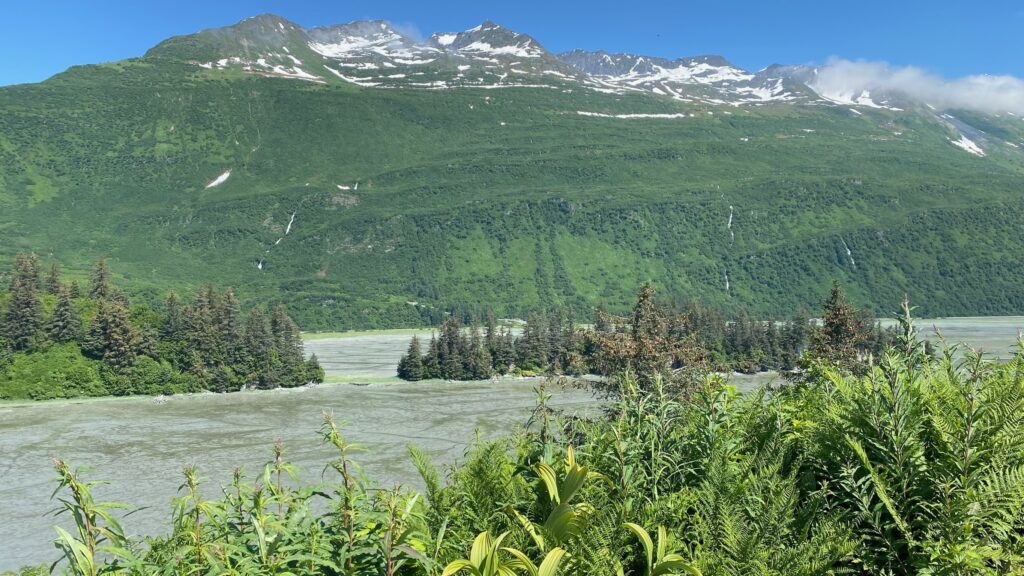
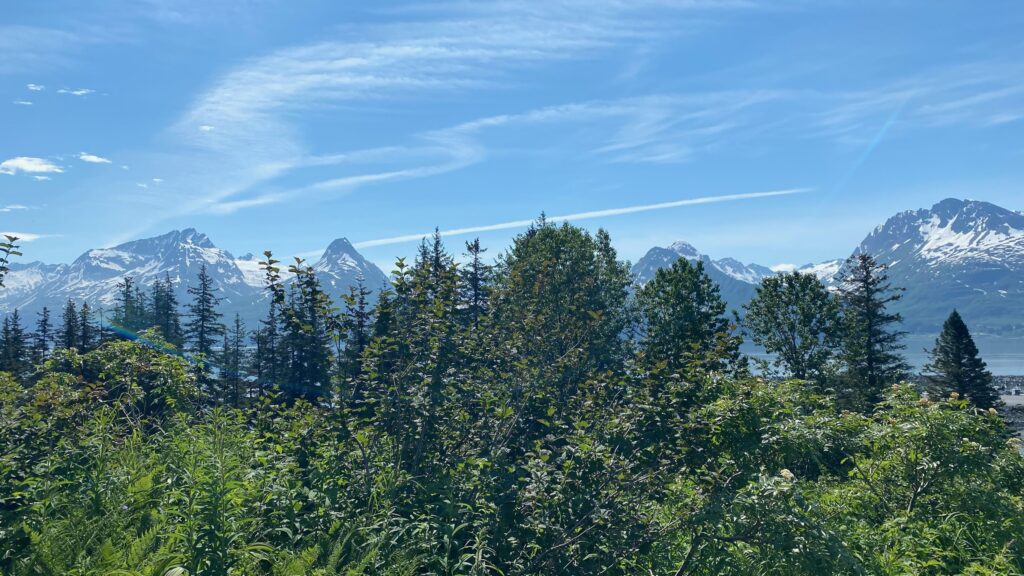

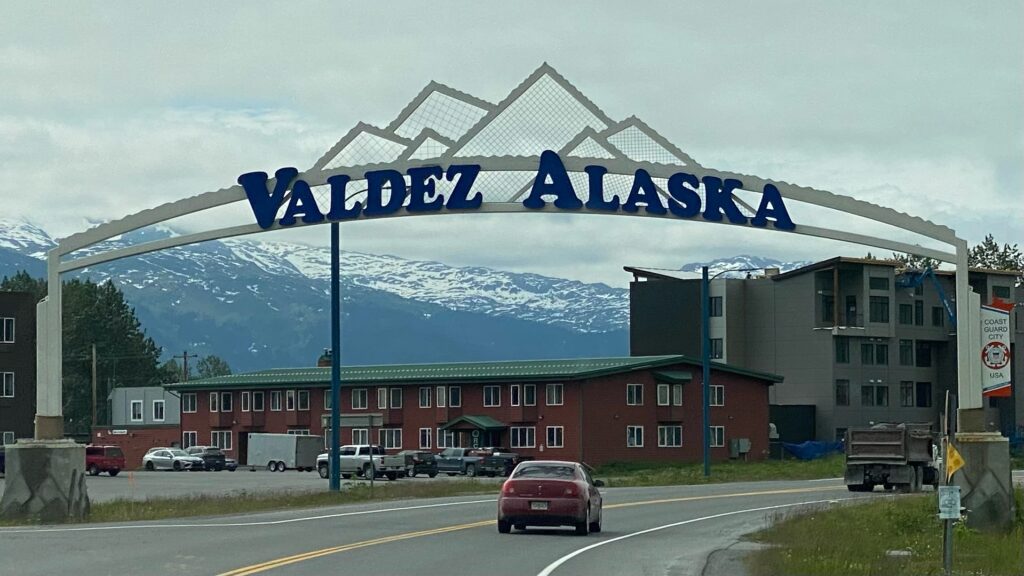


We drove the dirt road to Valdez Glacier but decided not to put the raft in.
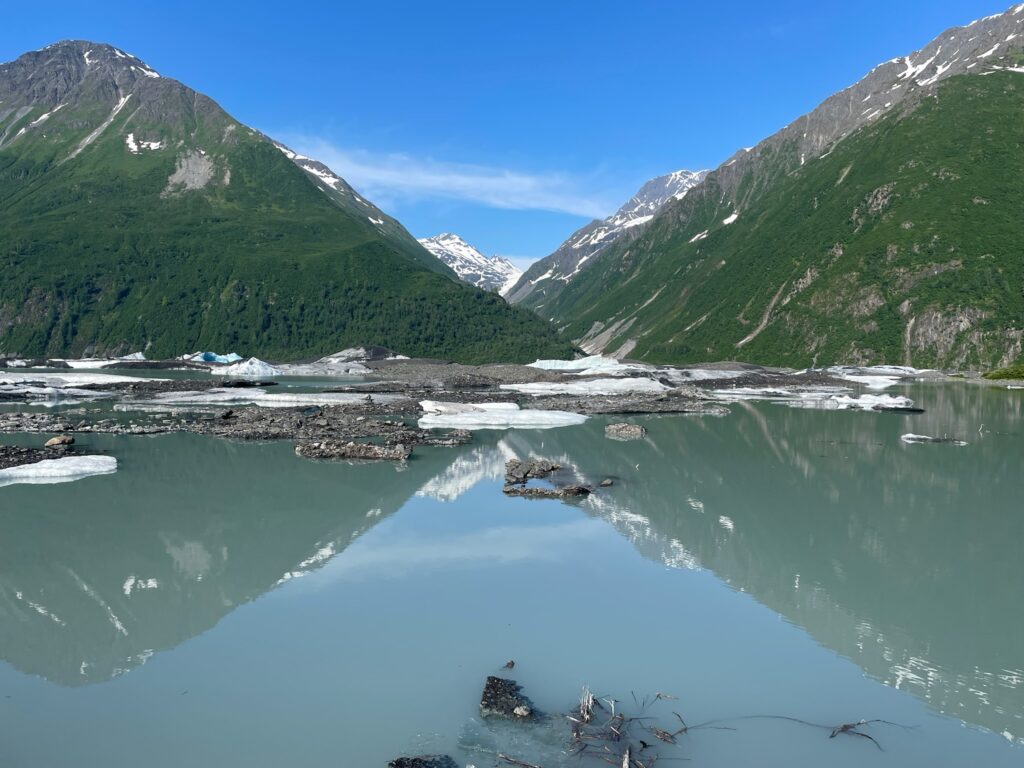
We biked along Mineral Creek. Doug even went back a day later to head further down the trail, although he didn’t get as far as the abandoned stamp mill which would have required him to leave the bike and hike the last little bit.





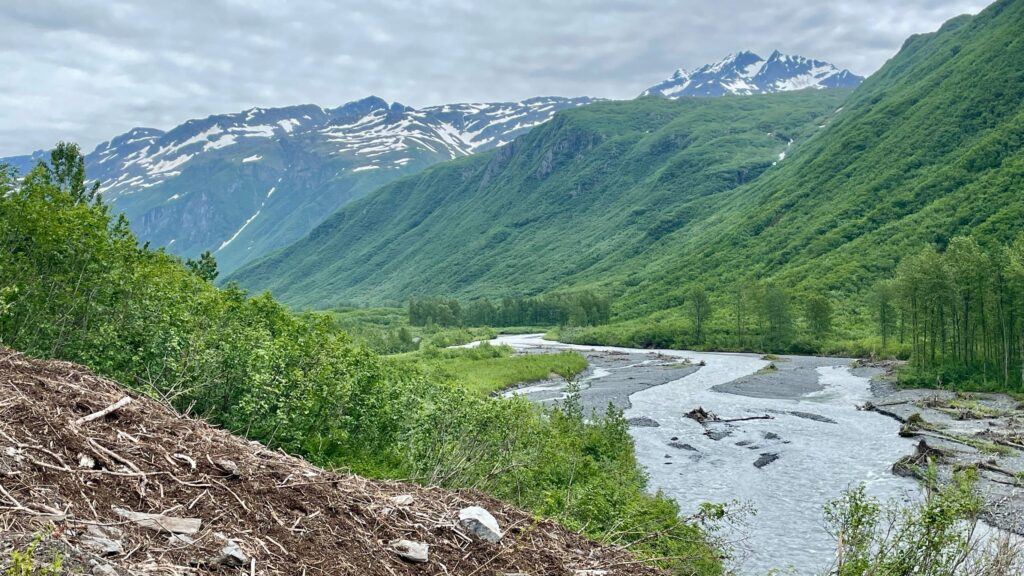
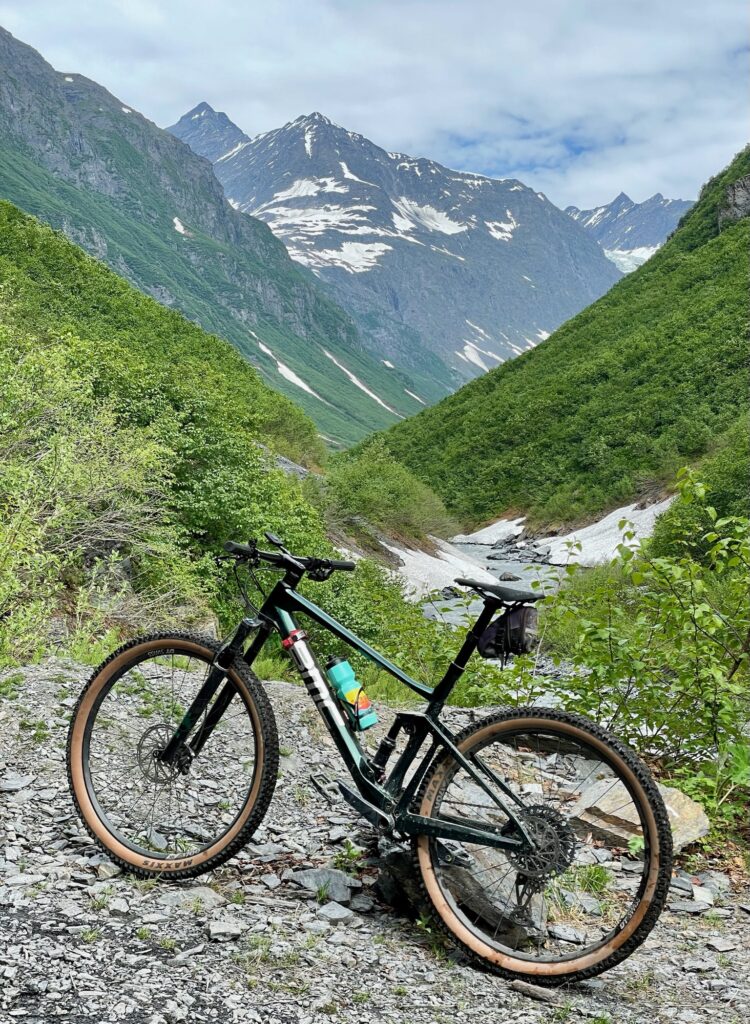
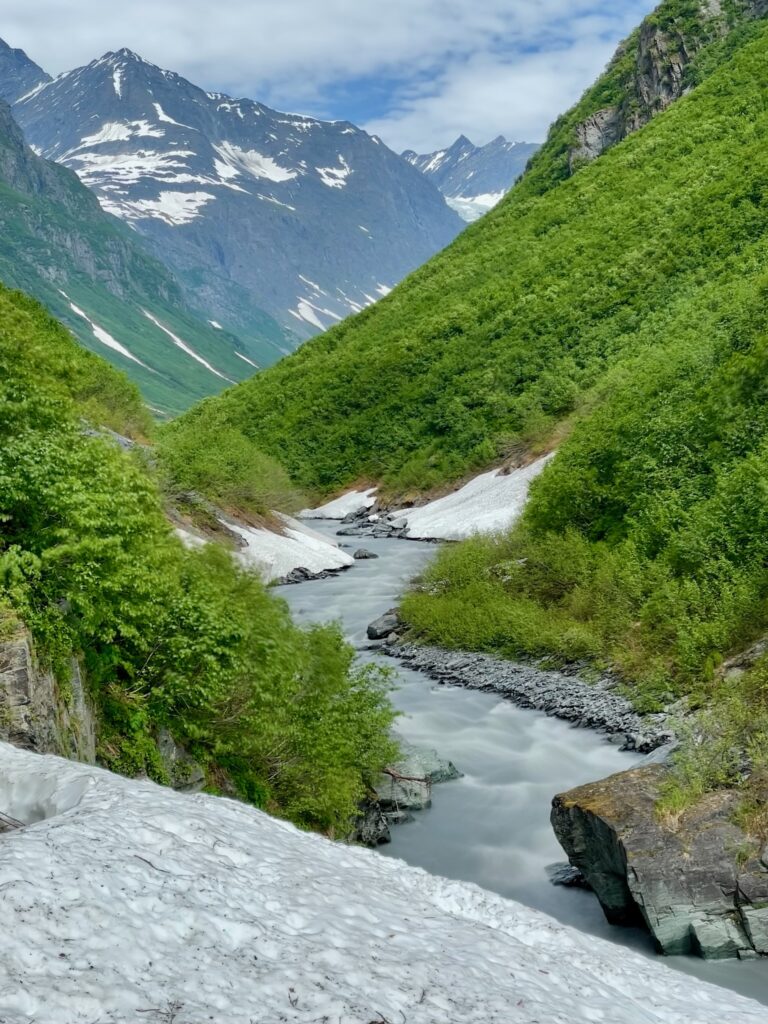
Doug rode his bike as far as he could and then hiked far enough to see Shoup Bay on the Shoup Bay Trail,
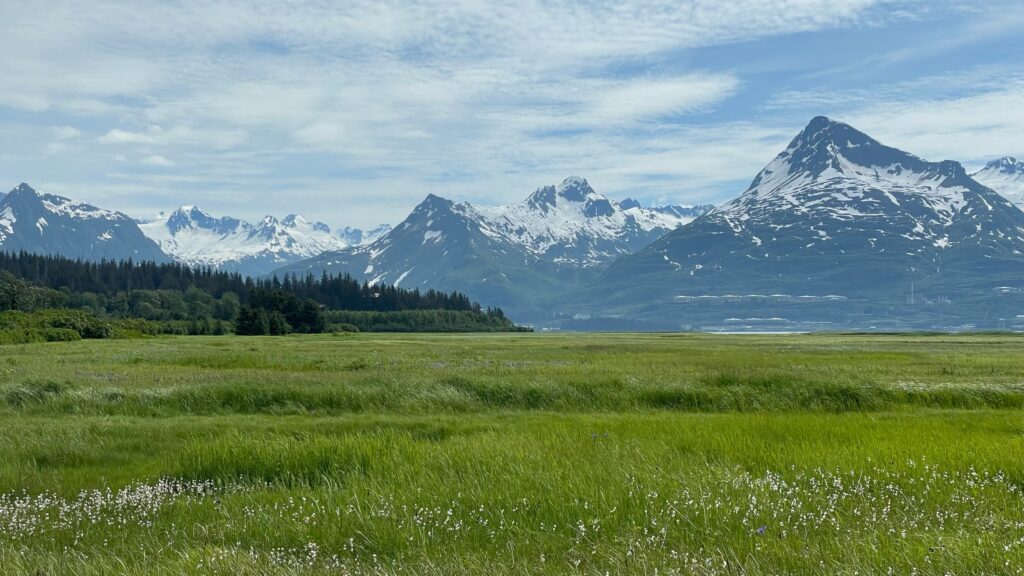
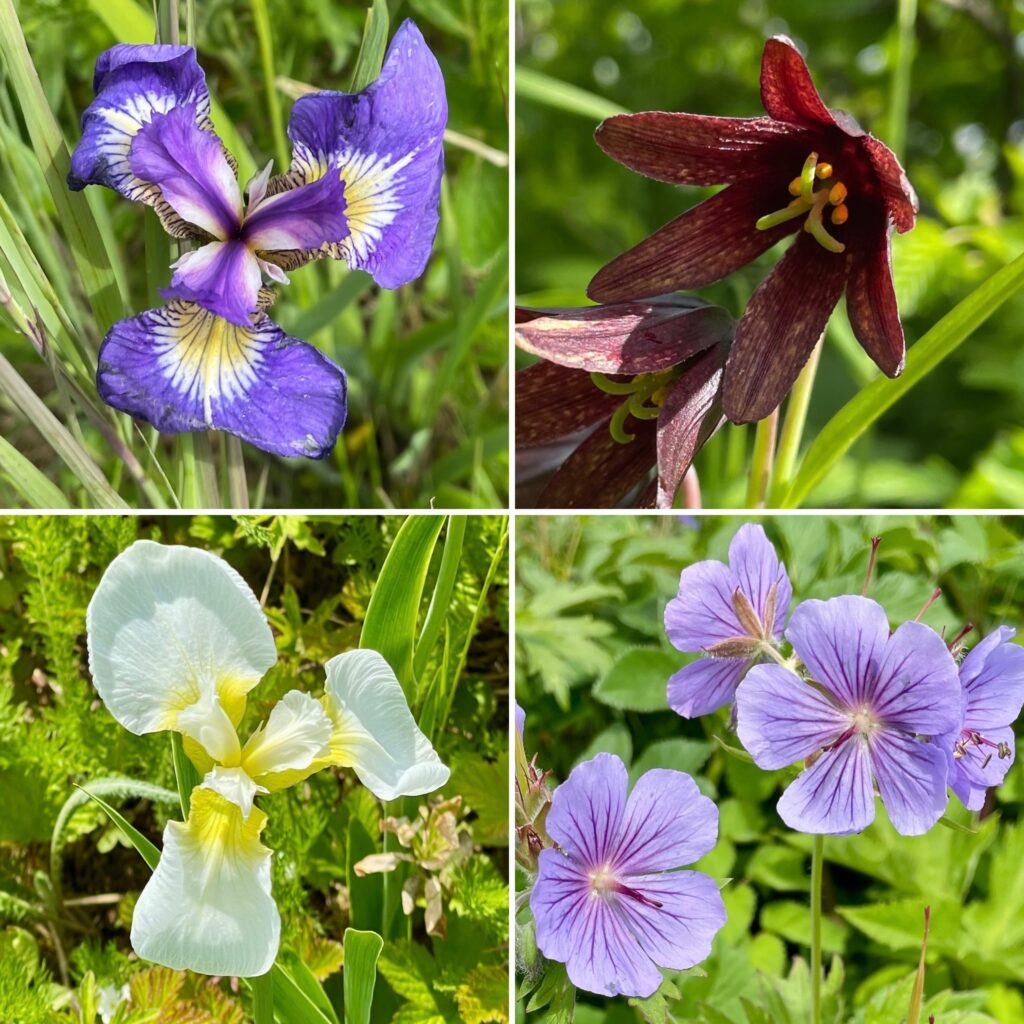
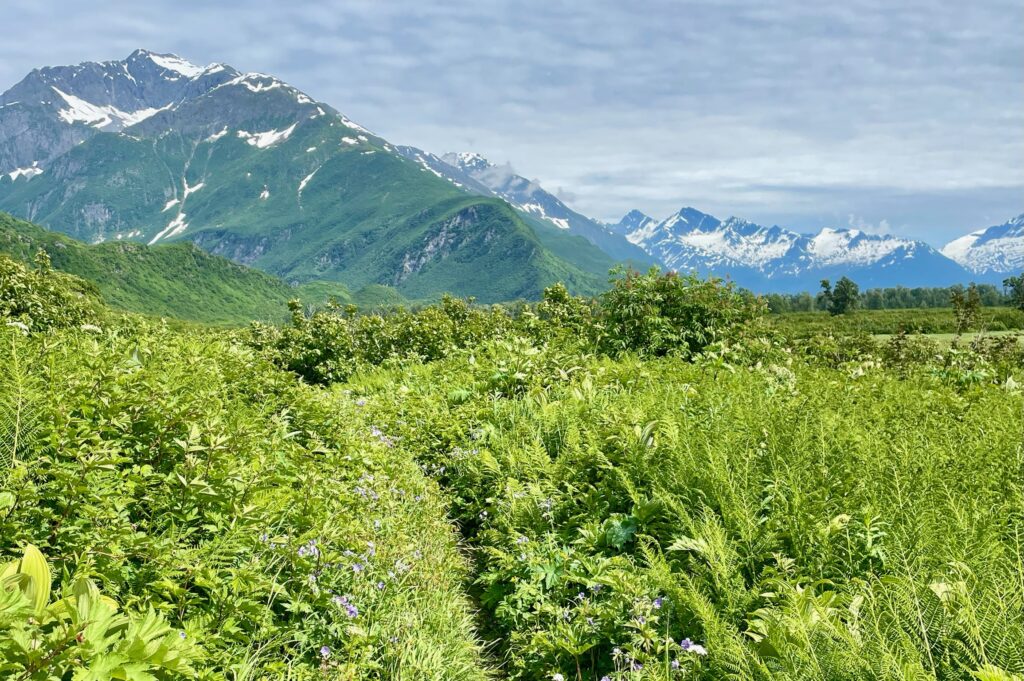
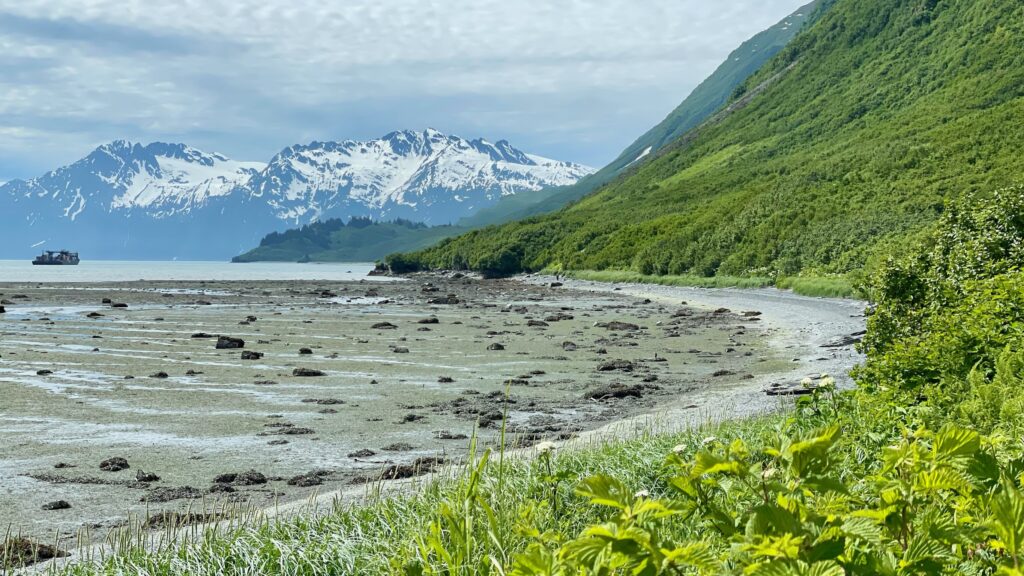
We walked the short boardwalk and had two great meals and drinks downtown.
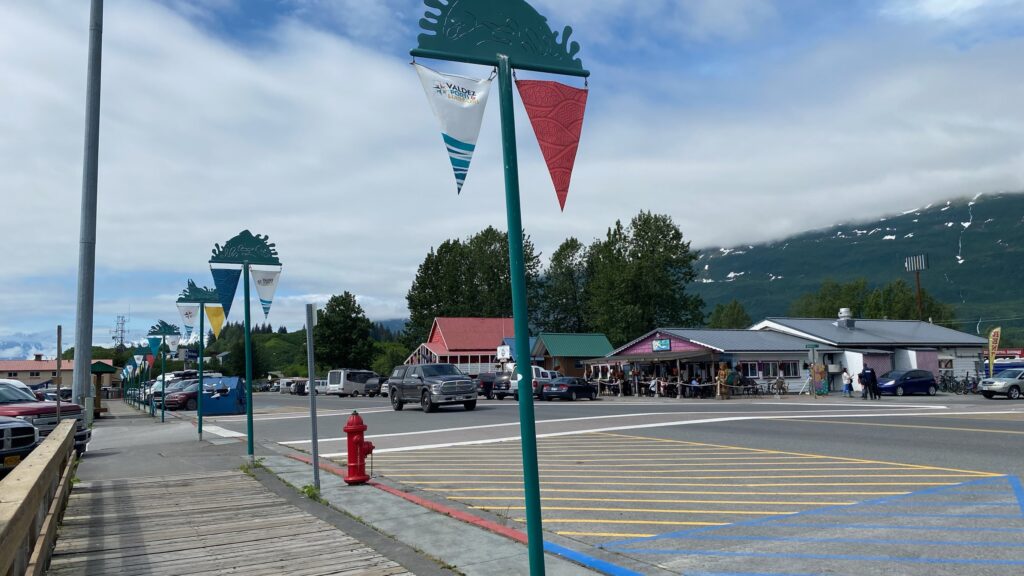
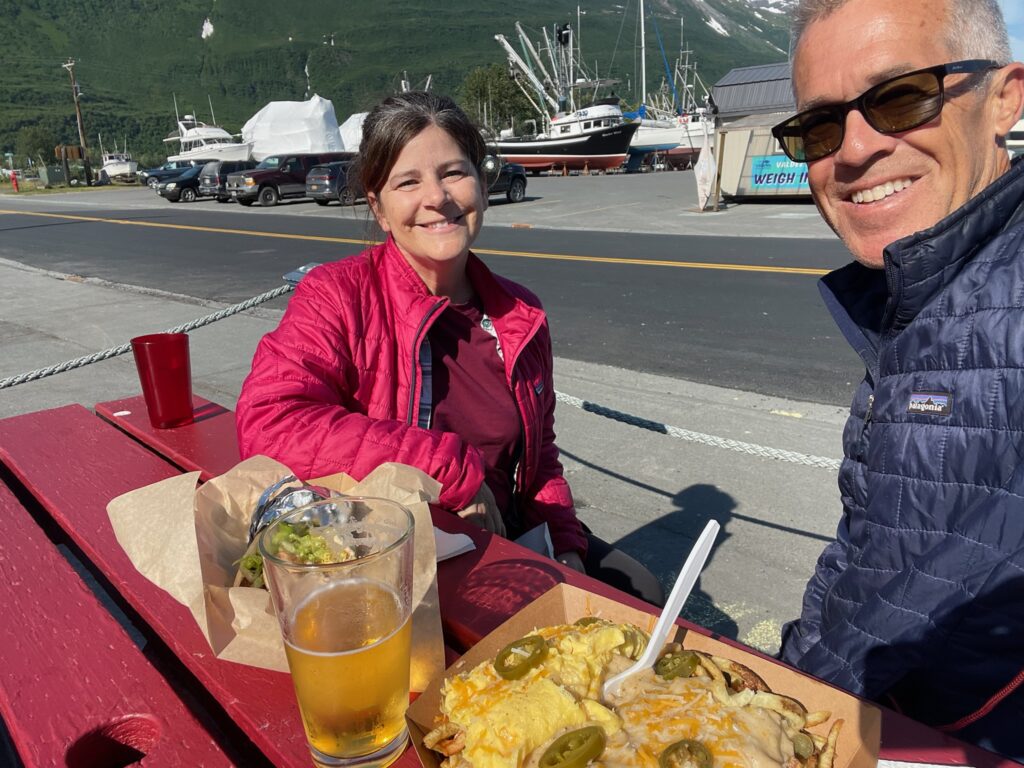
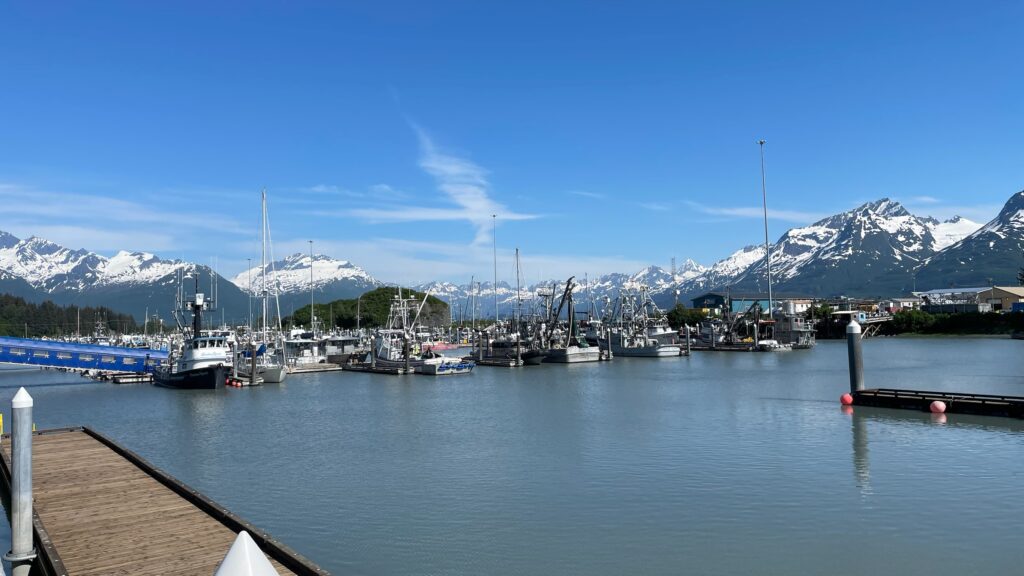
We also enjoyed views from our campsite and all of the wooden sculptures around town. We will leave the area by boarding a ferry with the RV to travel from Valdez to Whittier.
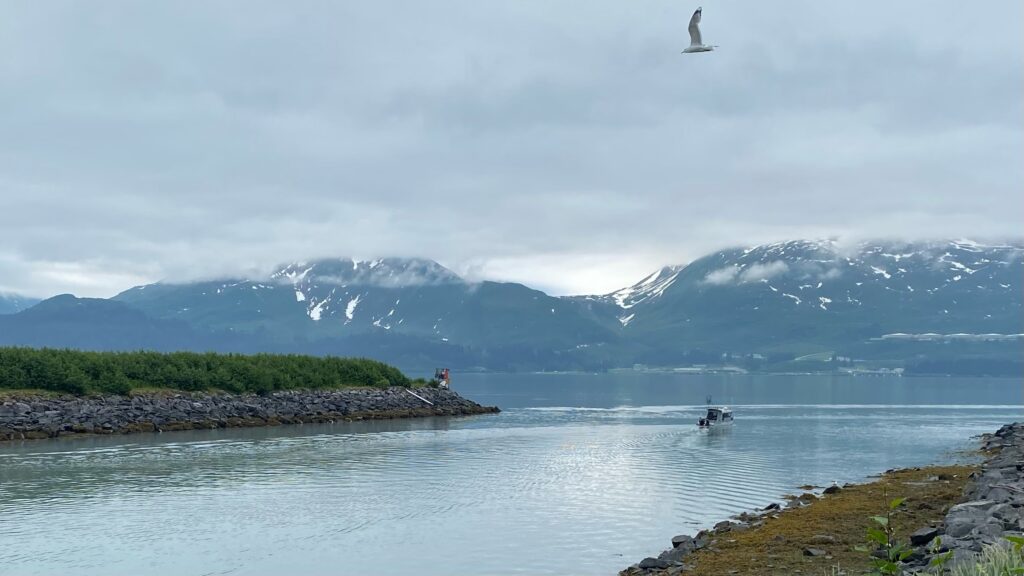
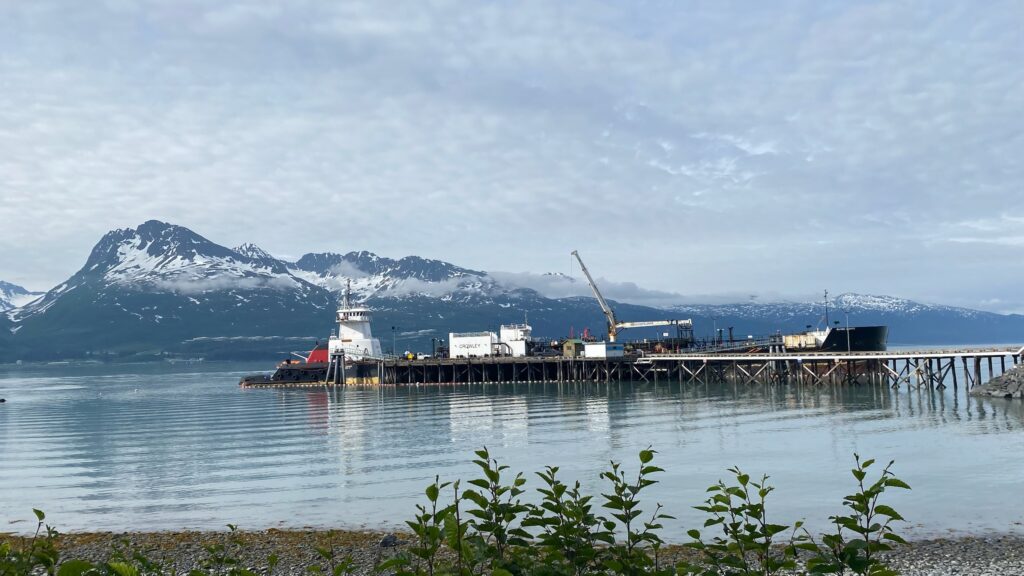
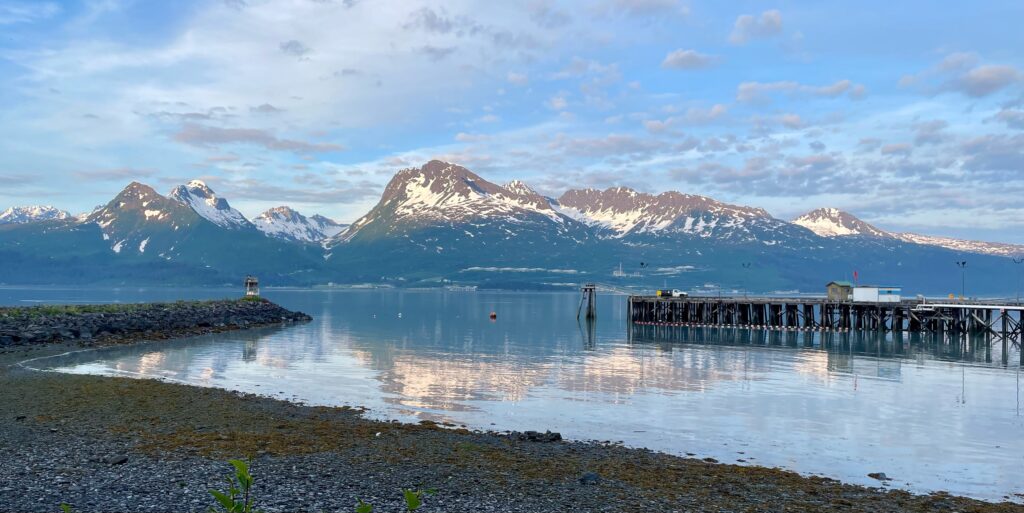
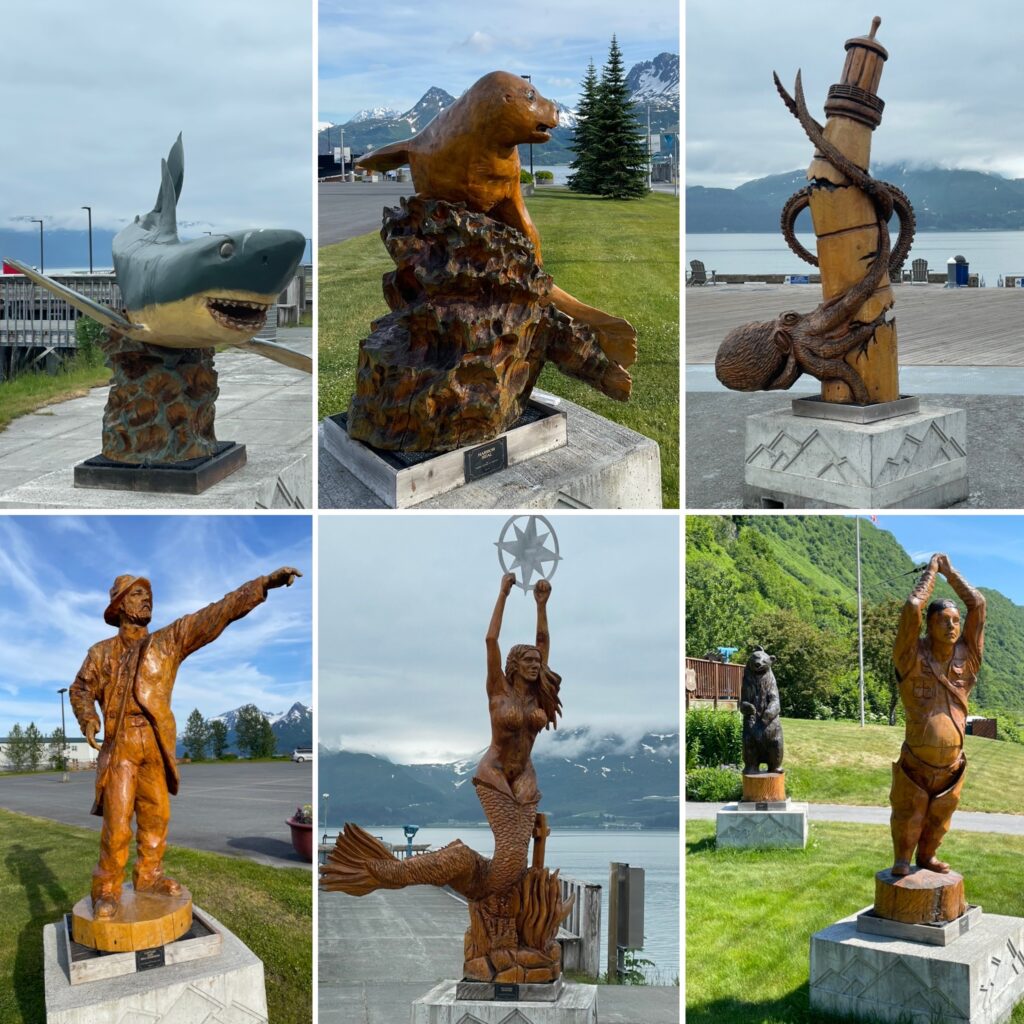
This beautiful coastal city is a spectacular mix of tidewater glaciers, soaring mountains dotted with waterfalls, and lush green forests. It’s a good place to spot a variety of wildlife, is full of friendly people, and has lots to do even if you didn’t come for the world-class fishing. Now, I’m not sure I’d want to year-round here given that it also has the distinction of being the snowiest town in Alaska with annual averages a bit over 300 inches of snow (its neighboring pass, Thompson Pass, can see between 600 and 900 inches of snow), but if you’re near the Kenai Peninsula during the summer, consider going a little bit out of your way to get a big kick out of Valdez.
























 Did you know that the oldest and largest aviati
Did you know that the oldest and largest aviati
